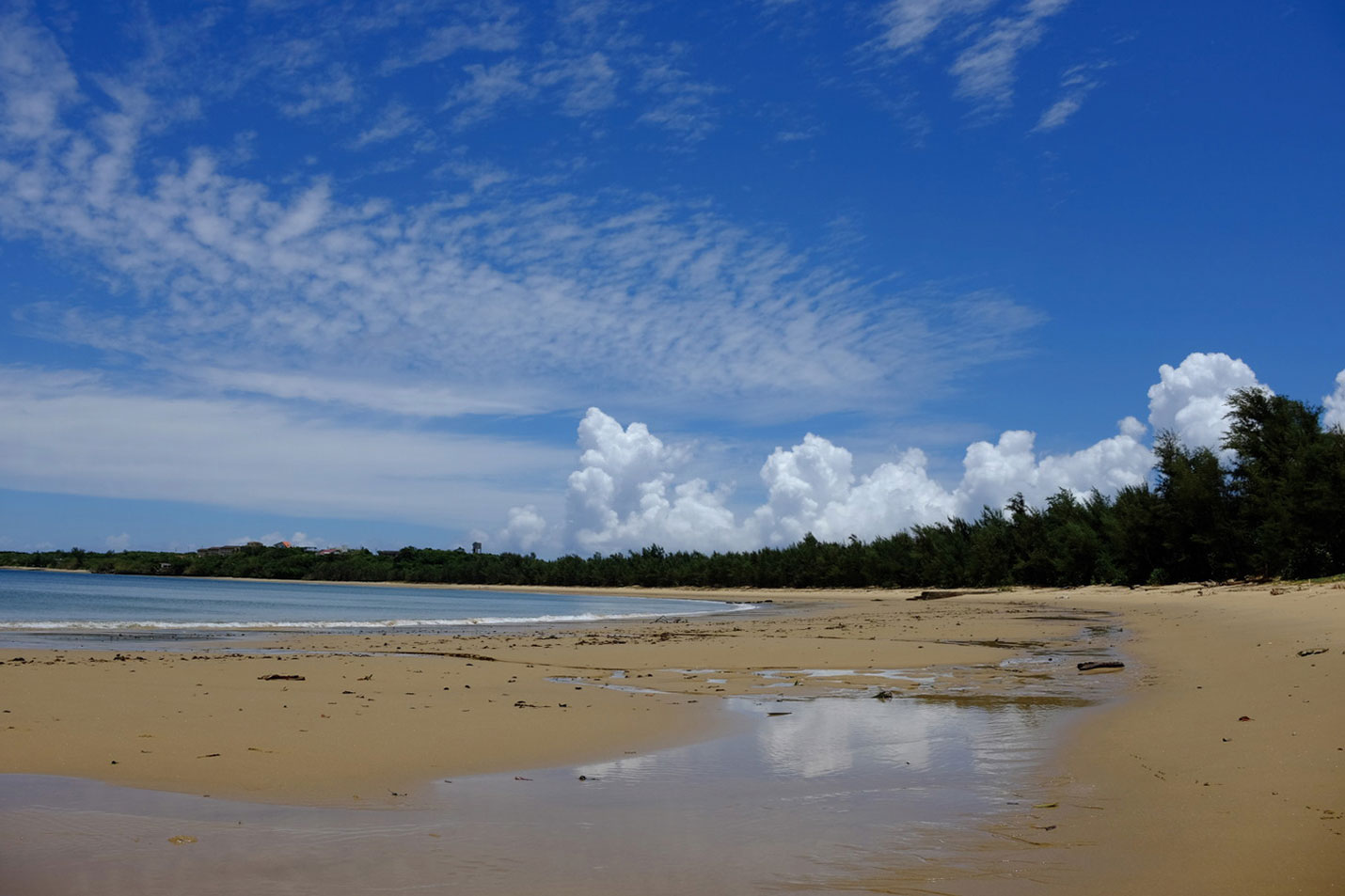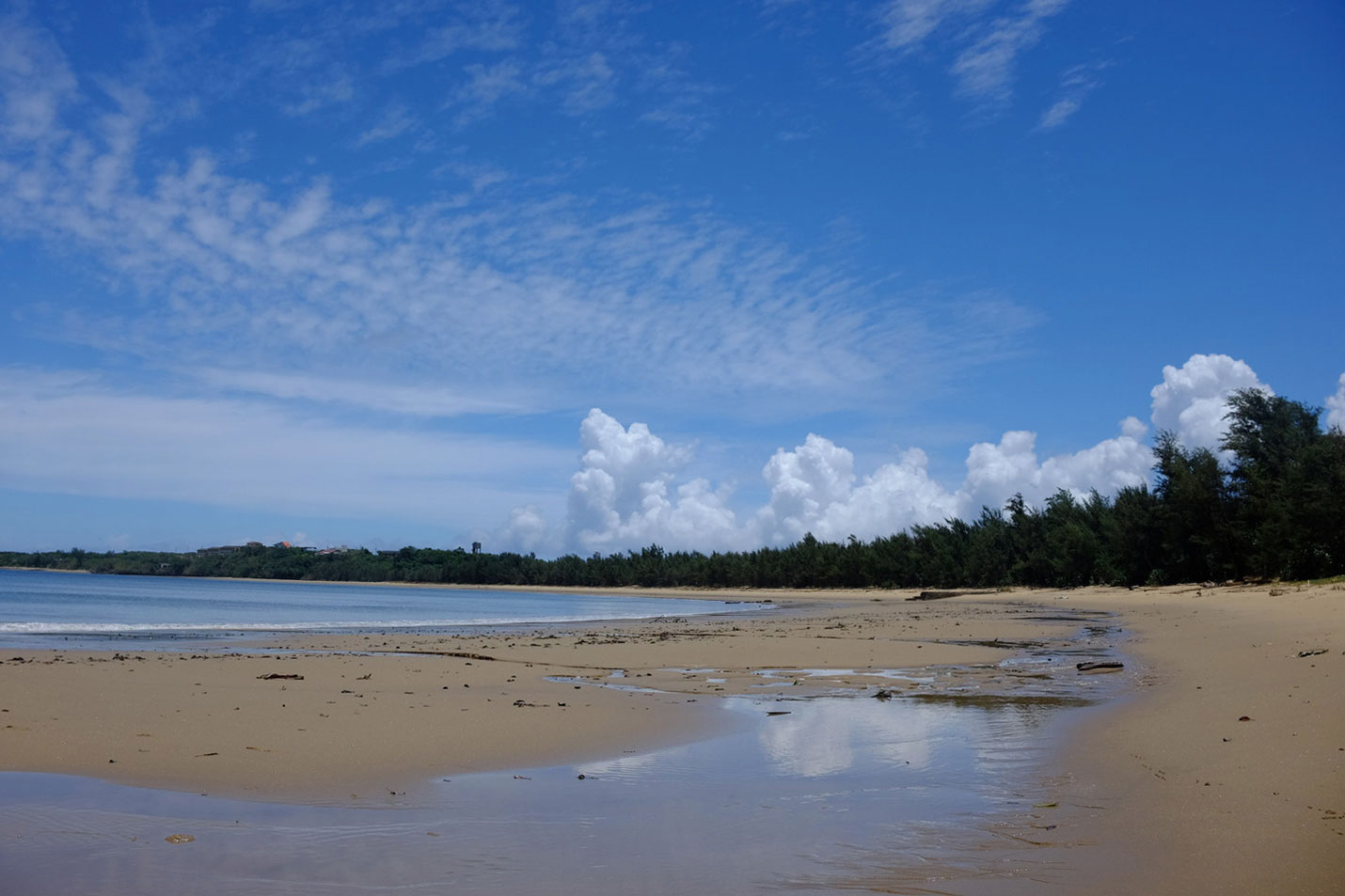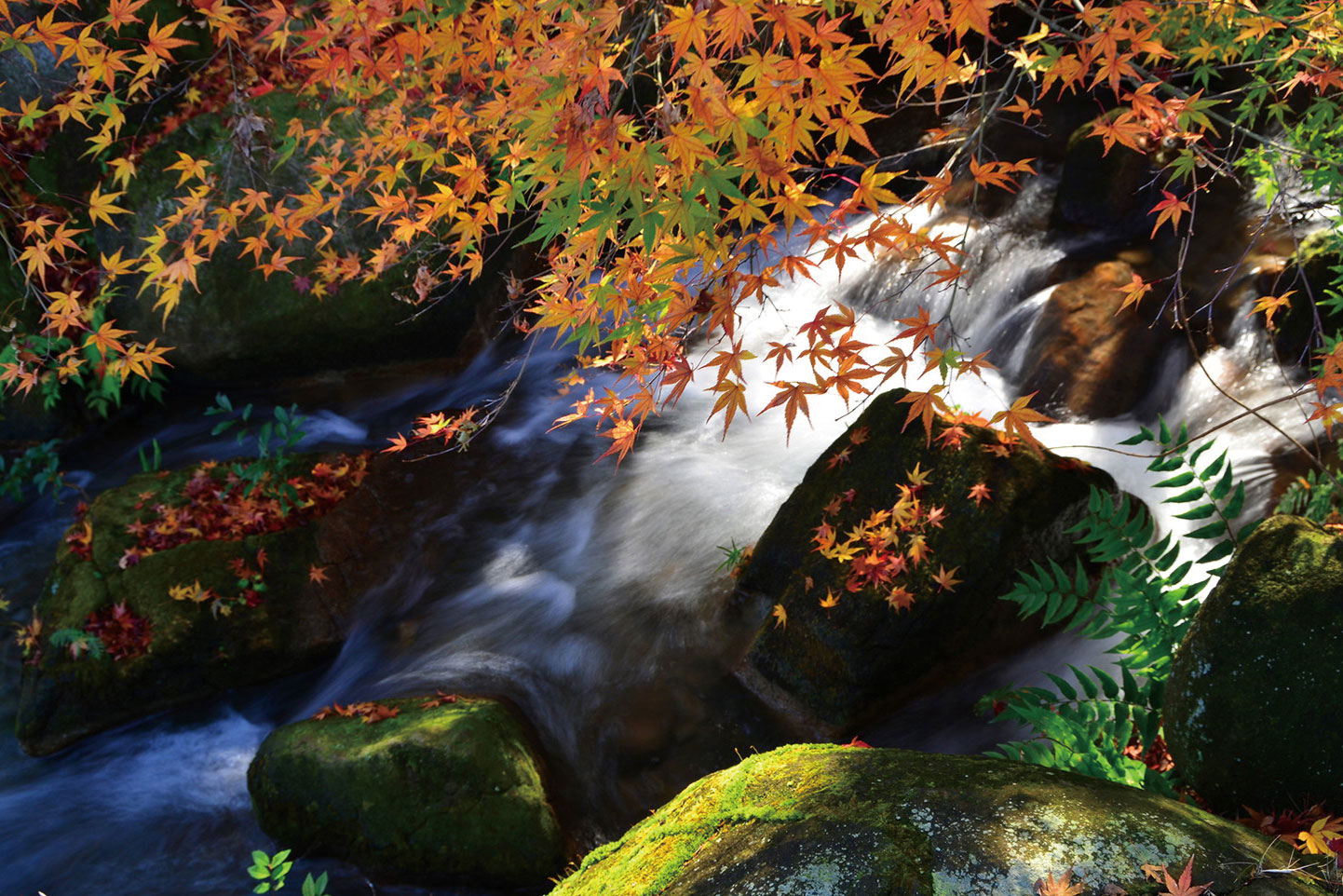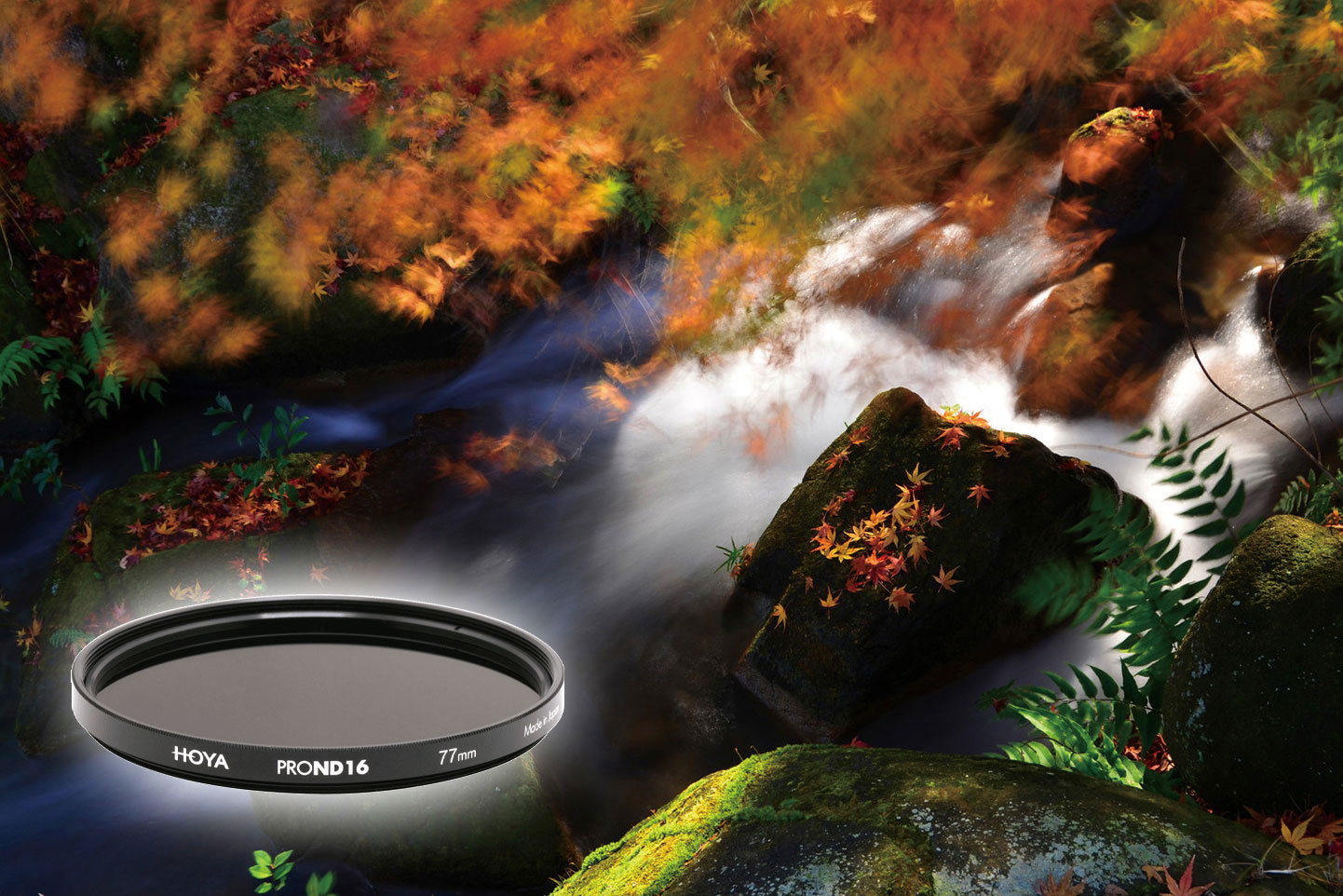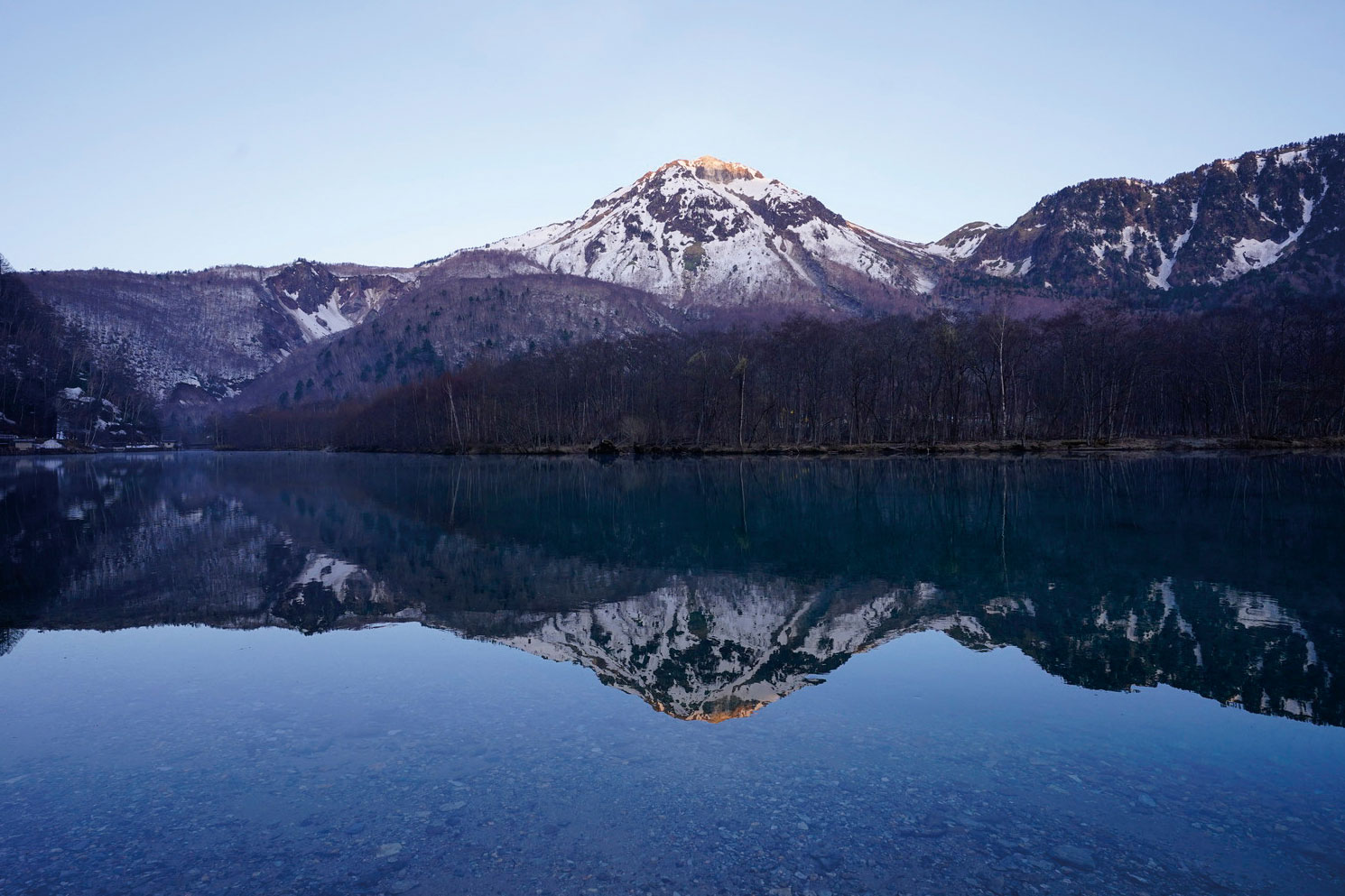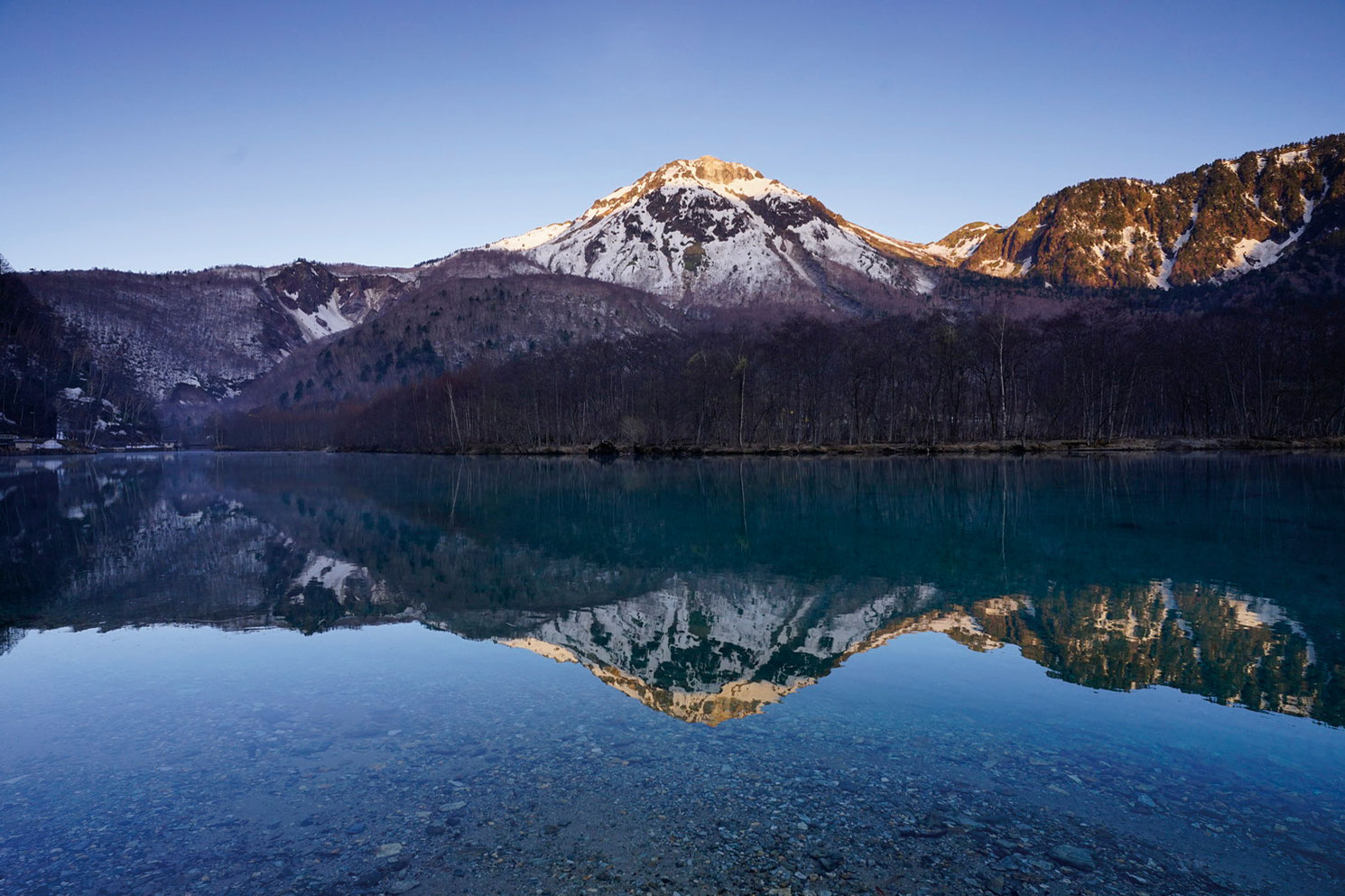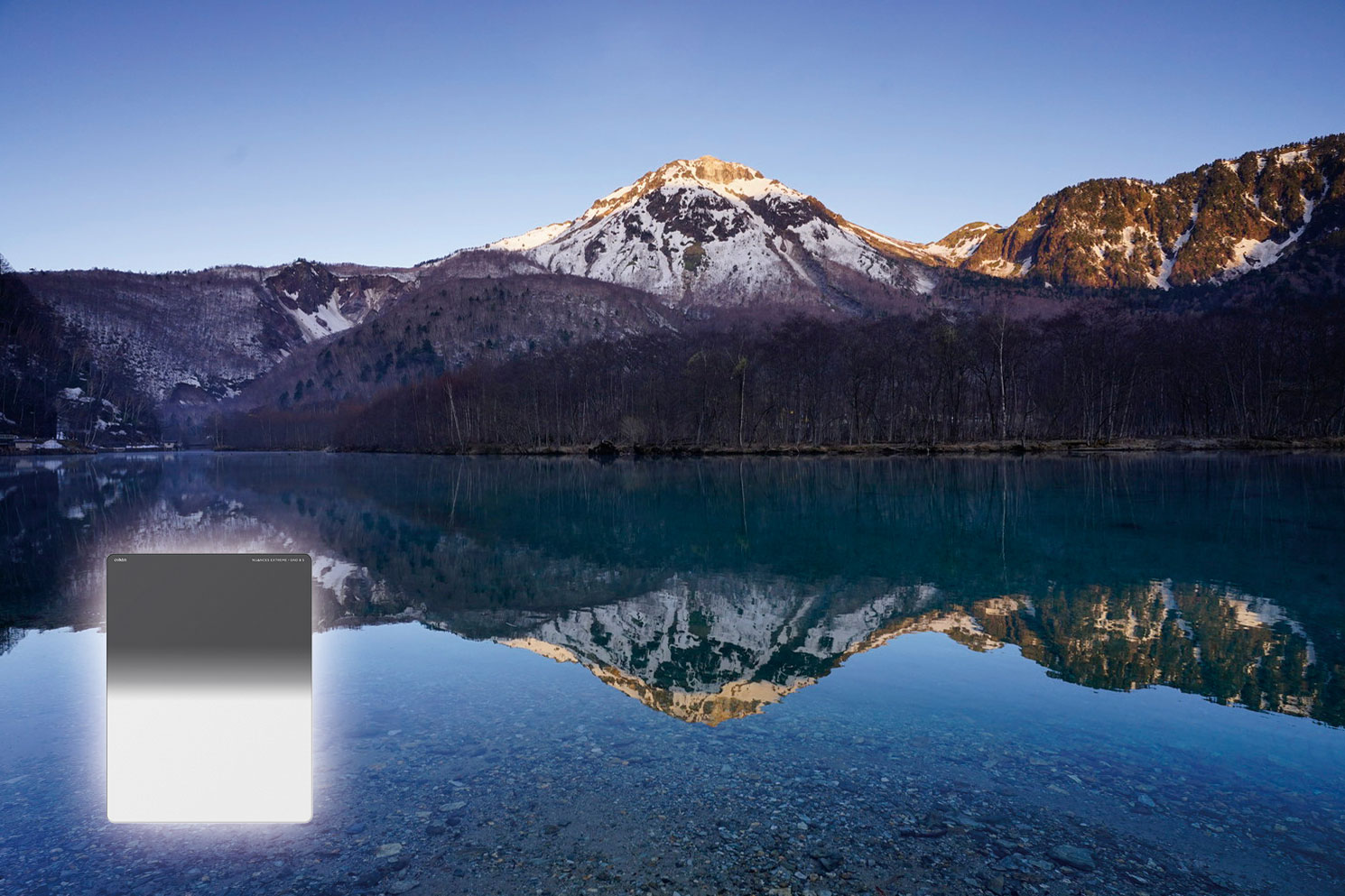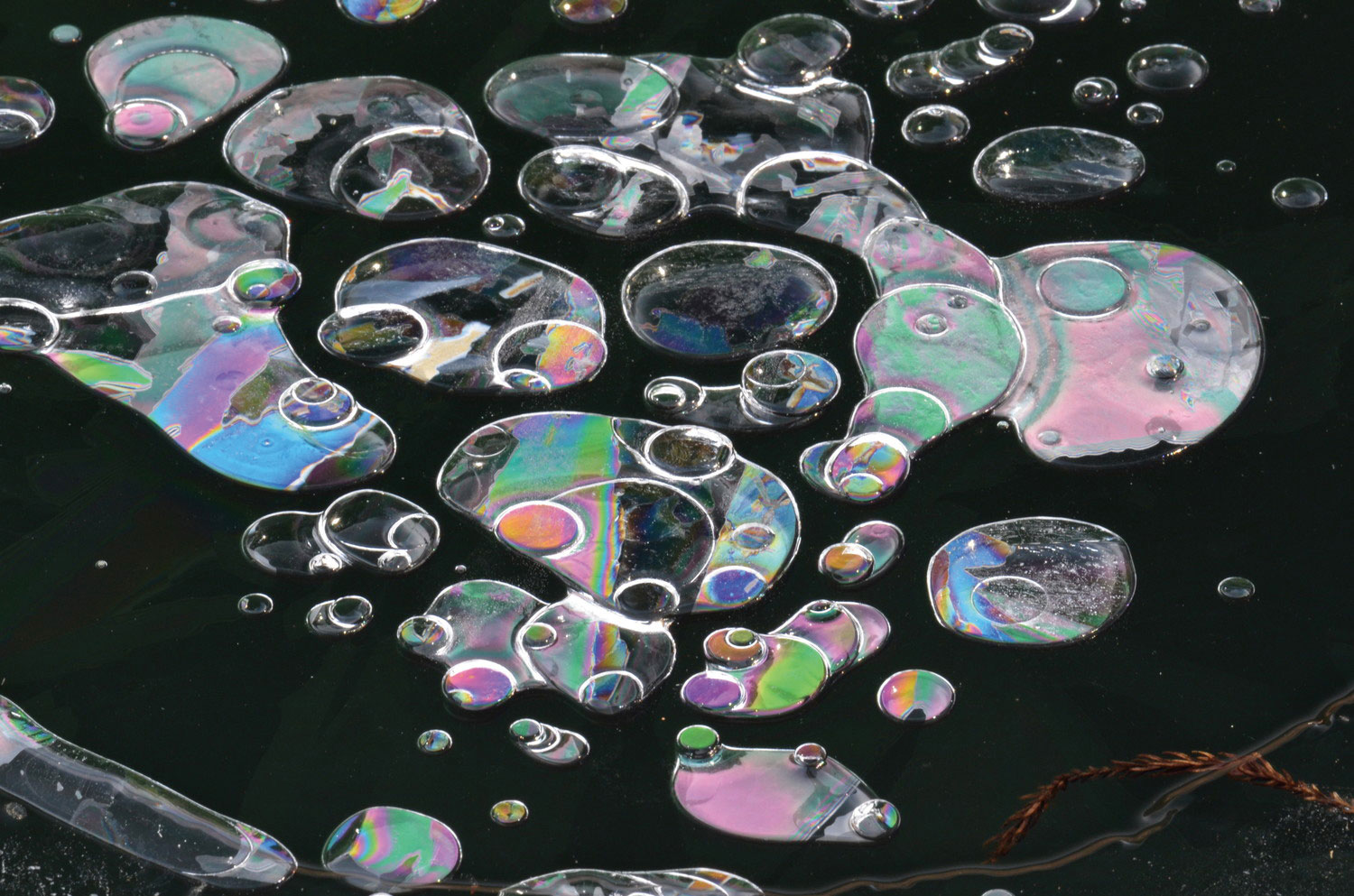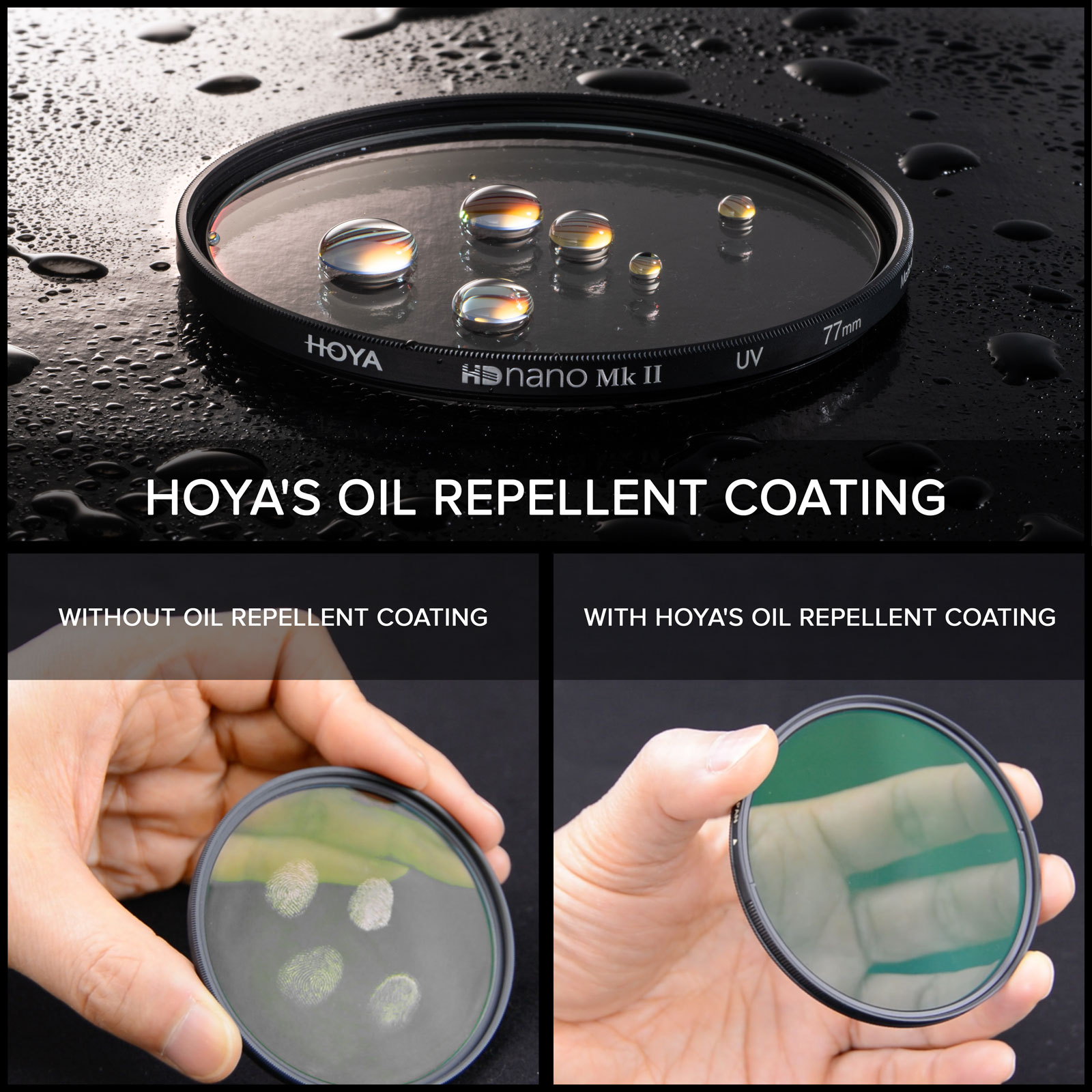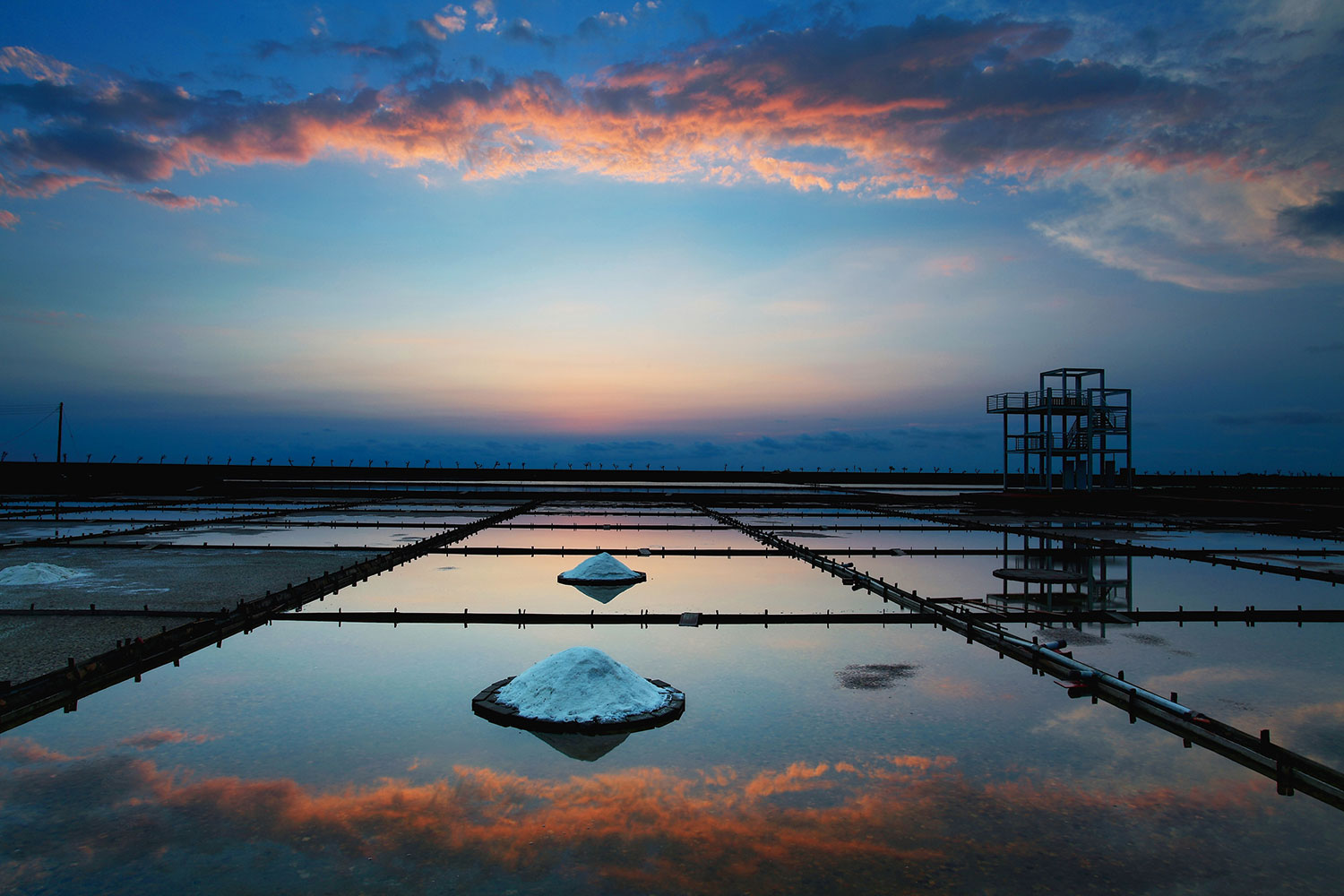How to express a vivid landscape with PL filters
A PL filter can enhance vivid colors and contrast by controlling light reflections. This kind of filter can suppress unwanted light reflections on water surfaces, glass surfaces, foliage, buildings, etc., thus making a blue sky more vivid and bringing out the original color of your shooting subjects. It's an indispensable filter for landscape photography all year round.
 Have you ever been disappointed that the photos you took were not as vivid and impressive as the beautiful scenery you wanted to capture? If so, a PL filter is what you need when capturing landscapes. With this filter you can manage any reflected light by turning the front frame of its double frame structure. You can also make the sea look clearer through suppressing unwanted reflections from water surfaces, or the blue of the sky deeper and more vivid by enhancing the contrast.
Have you ever been disappointed that the photos you took were not as vivid and impressive as the beautiful scenery you wanted to capture? If so, a PL filter is what you need when capturing landscapes. With this filter you can manage any reflected light by turning the front frame of its double frame structure. You can also make the sea look clearer through suppressing unwanted reflections from water surfaces, or the blue of the sky deeper and more vivid by enhancing the contrast.
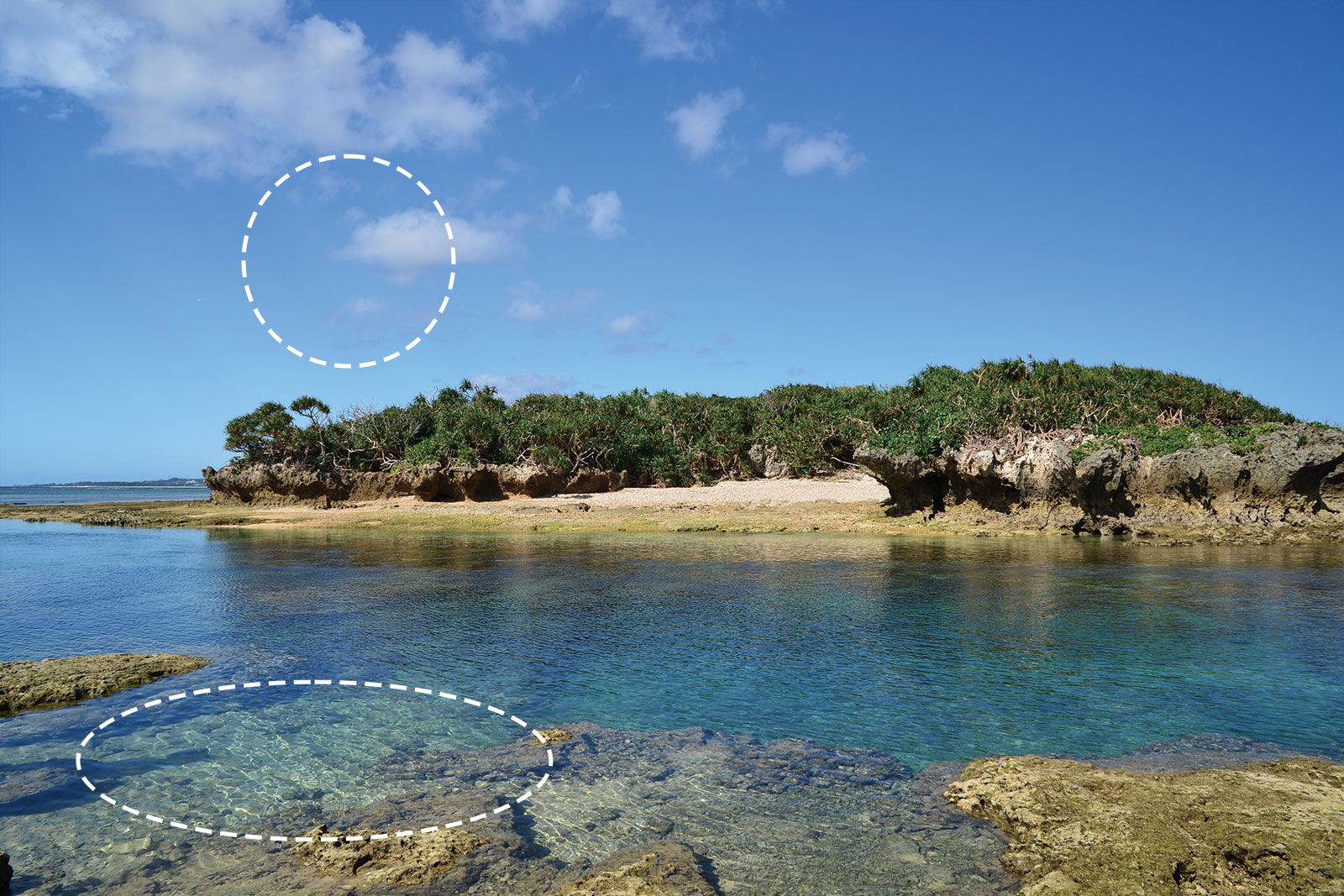 |
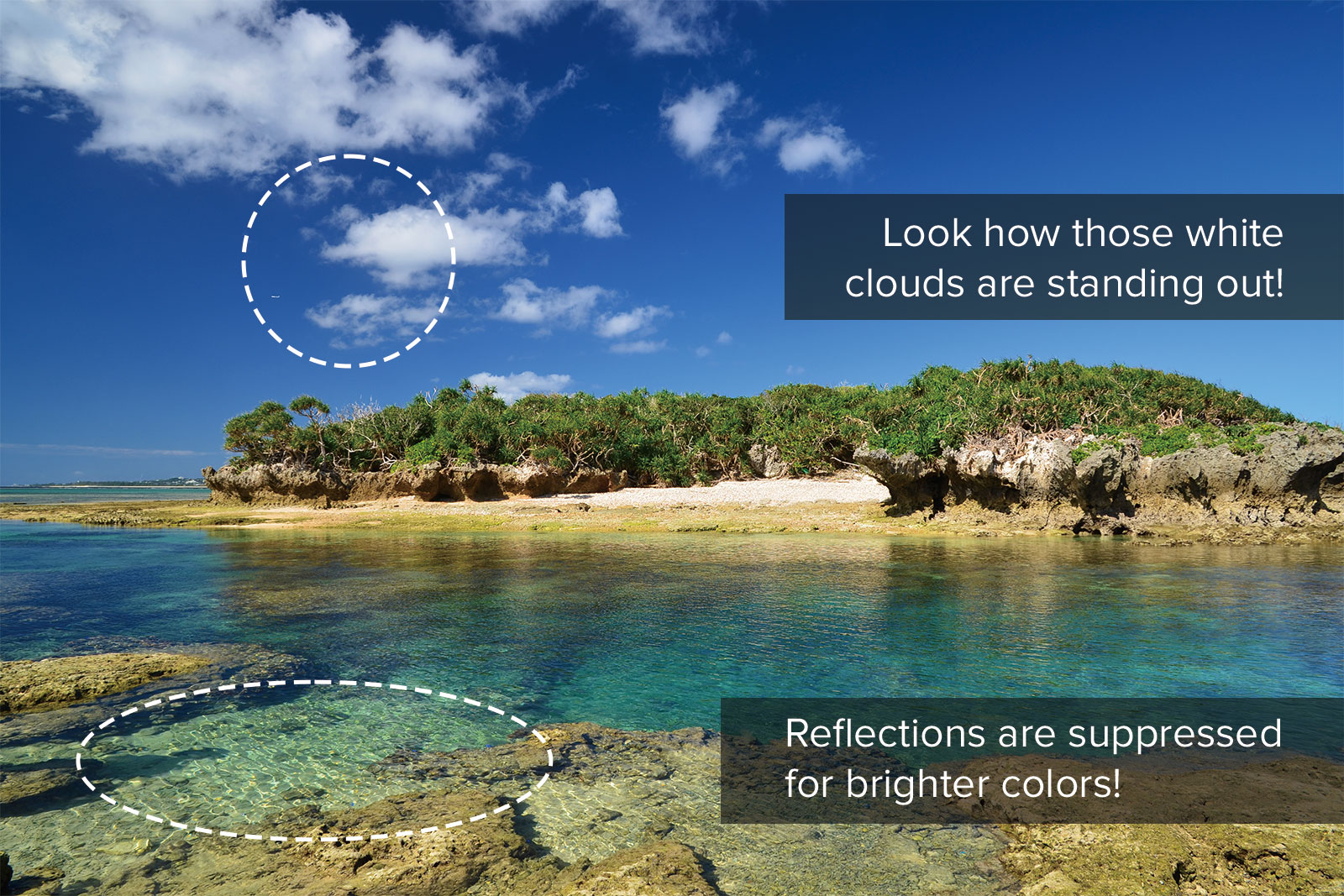 |
How PL filters work
A PL filter is a polarizing filter consisting of two glasses with a polarizing film sandwiched in between. This polarizing film comes in a fine slit shape, invisible to the naked eye, that cuts (absorbs) the light in a specific direction. Normally, light oscillates in all directions, but once passing through a polarizing filter, it gets "polarized" in one single direction (Fig.1).
Most of the light reflected from the surface of an object, like water or glass, becomes polarized in one direction (fig.2).
The front frame of the PL filter can be rotated to change the angle of the polarizing film, thus cutting light reflections according to your needs and shooting conditions (picture below).
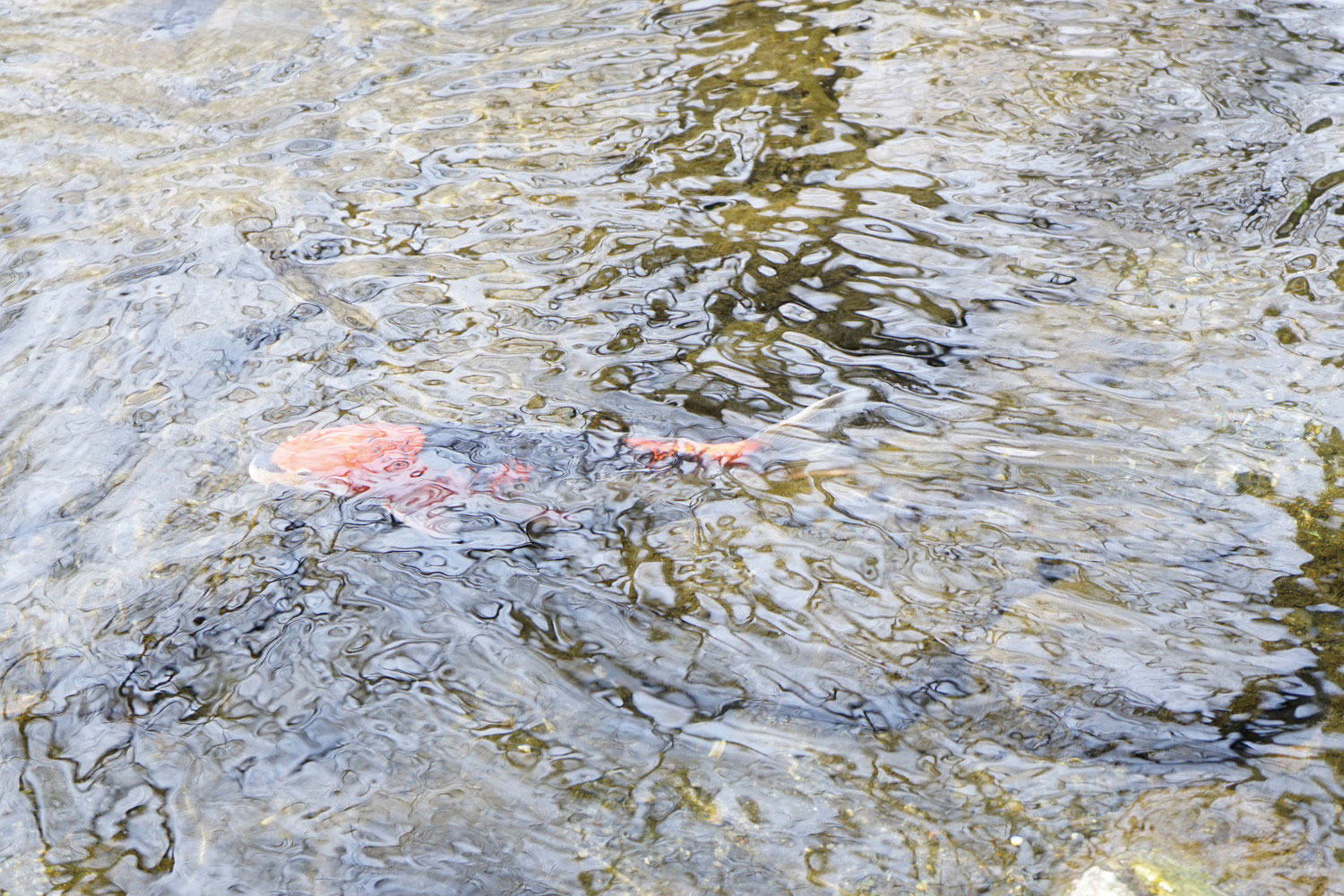 |
 |
 Most PL filters have this triangle mark ▲ on the frame: by rotating this mark upward, the direction of the slit-shaped polarizing film becomes horizontal. When the ▲ mark is upward, the reflection suppression effect is maximized, but may change depending on the direction in which light is reflected. It is thus necessary to rotate the filter to the proper angle while checking the effect through your camera finder or on your camera screen.
Most PL filters have this triangle mark ▲ on the frame: by rotating this mark upward, the direction of the slit-shaped polarizing film becomes horizontal. When the ▲ mark is upward, the reflection suppression effect is maximized, but may change depending on the direction in which light is reflected. It is thus necessary to rotate the filter to the proper angle while checking the effect through your camera finder or on your camera screen.
What is light circular polarization?
Most PL filters currently on the market are C-PL or CIR-PL (Circular Polarizing) filters. In the past, PL filters were also defined "linear polarizing filters". As cameras with half-mirrors, which have the same properties as the polarizing film, came on the market, the interference between the camera's half-mirror and the polarizing film of the PL filter caused errors in light and distance measurement, so an improved version, the CIR-PL, was born.
The CIR-PL has an additional "phase-contrast plate" (fig.3). When the light passes through the phase-contrast plate, it changes to a circularly rotating light, which is similar to normal light vibrating in all directions (fig.4). Therefore, it can avoid the interference of the half-mirror of the camera. To avoid interference with cameras' half mirrors and low pass filters, most of the PL filters currently on the market are in fact CIR-PL filters.
PL filter effect
Effect 1: Adjusting light reflections (anti-reflection effect)
One of the most common effects of PL filters is to "adjust reflections". Compare the examples of "reflections on the water" below. Without the filter, the reflection in the water makes it glow white. When using a PL filter, reflections are suppressed, and the true color of the sea can be captured more vividly. Not restricted to light reflection on water surface, PL filters can also suppress unwanted light reflections generated from other surfaces like glass, leaves, stones, buildings, ground, etc. However, PL filters have no effect on light reflections from metallic surfaces, like mirrors etc.
Reflections from water surface
The PL filter removes reflections from the water surface. This allows you to capture clear images of the ocean or a clear stream, and to create a sense of transparency.
 |
 |
Glass reflections
PL filters have the effect of suppressing background reflections from glass surfaces, like in show windows, etc.
 |
 |
* It is not possible to remove reflections when shooting directly in front of a glass or water surface. See "How to use PL filters" section for effective usage.
Light reflections from leaves
By removing the shine that occurs on the surface of leaves, it brings out the true and vivid colors of autumn leaves and fresh greenery. When photographing flowers, it also helps to highlight the main flower by reducing unwanted leaf reflections.
 |
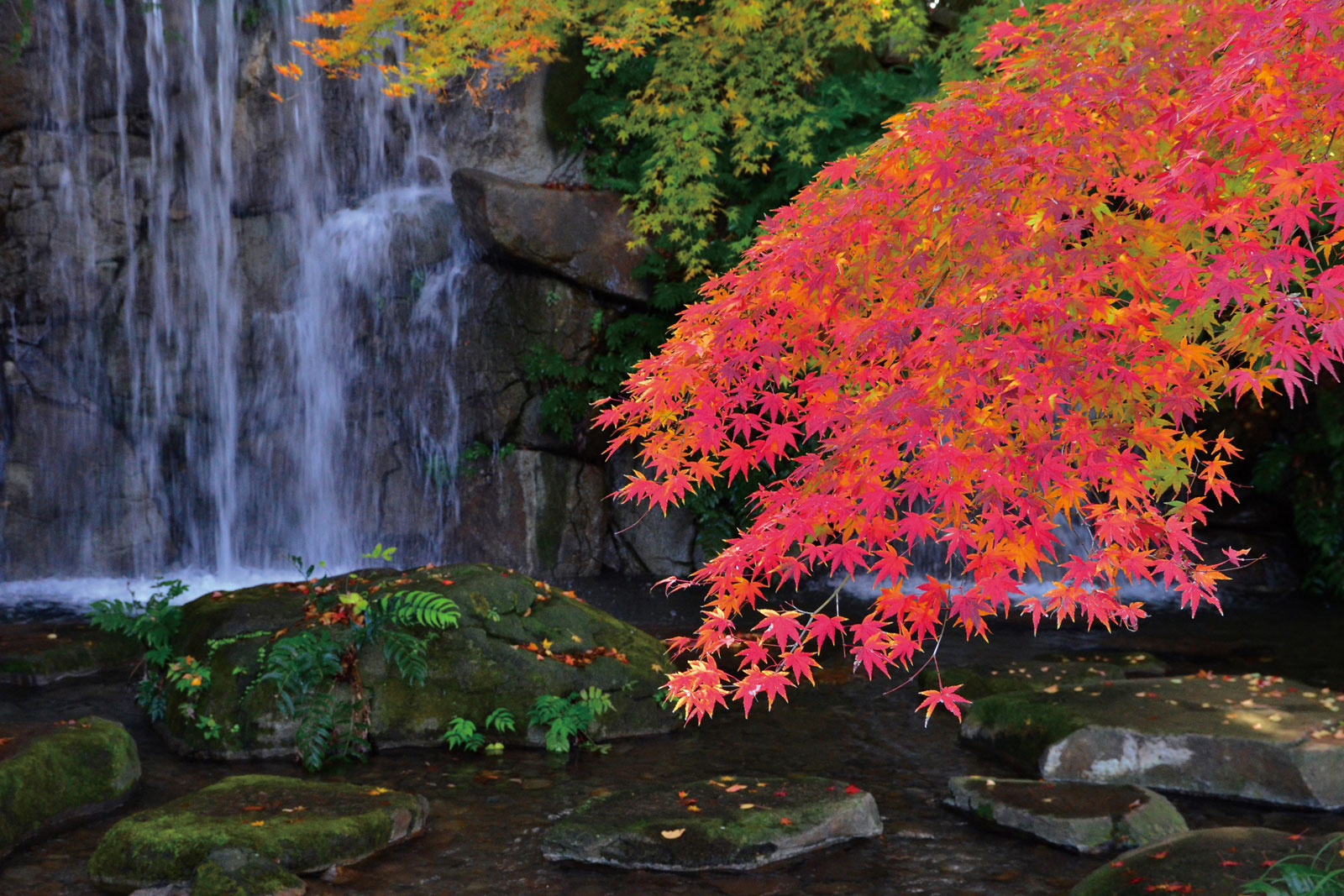 |
Object photography
PL filters are also useful for indoor photography of products, small objects and food, where they reduce unwanted reflections and enhance the color and texture of the image.
 |
 |
Effect 2: Making the blue sky more vivid (color contrast effect)
Another typical effect of PL filters is to make the blue of the sky deeper and more vivid. When sun rays hit the molecules in the atmosphere, light scattering occurs. By restraining the effect of light scattering with a PL filter, the blue of the sky appears deeper, thus creating a higher contrast with colors from flowers, green leaves, autumn foliage, white snow, etc., for a much more impressive result.
By enhancing the blue of the sky, light pink hues of flower petals stand out distinctly.
 |
 |
By increasing the blue of the sky and suppressing light reflections from tree leaves, contrast is enhanced.
 |
 |
Vividness and contrast of a blue sky and autumn foliage are achieved.
 |
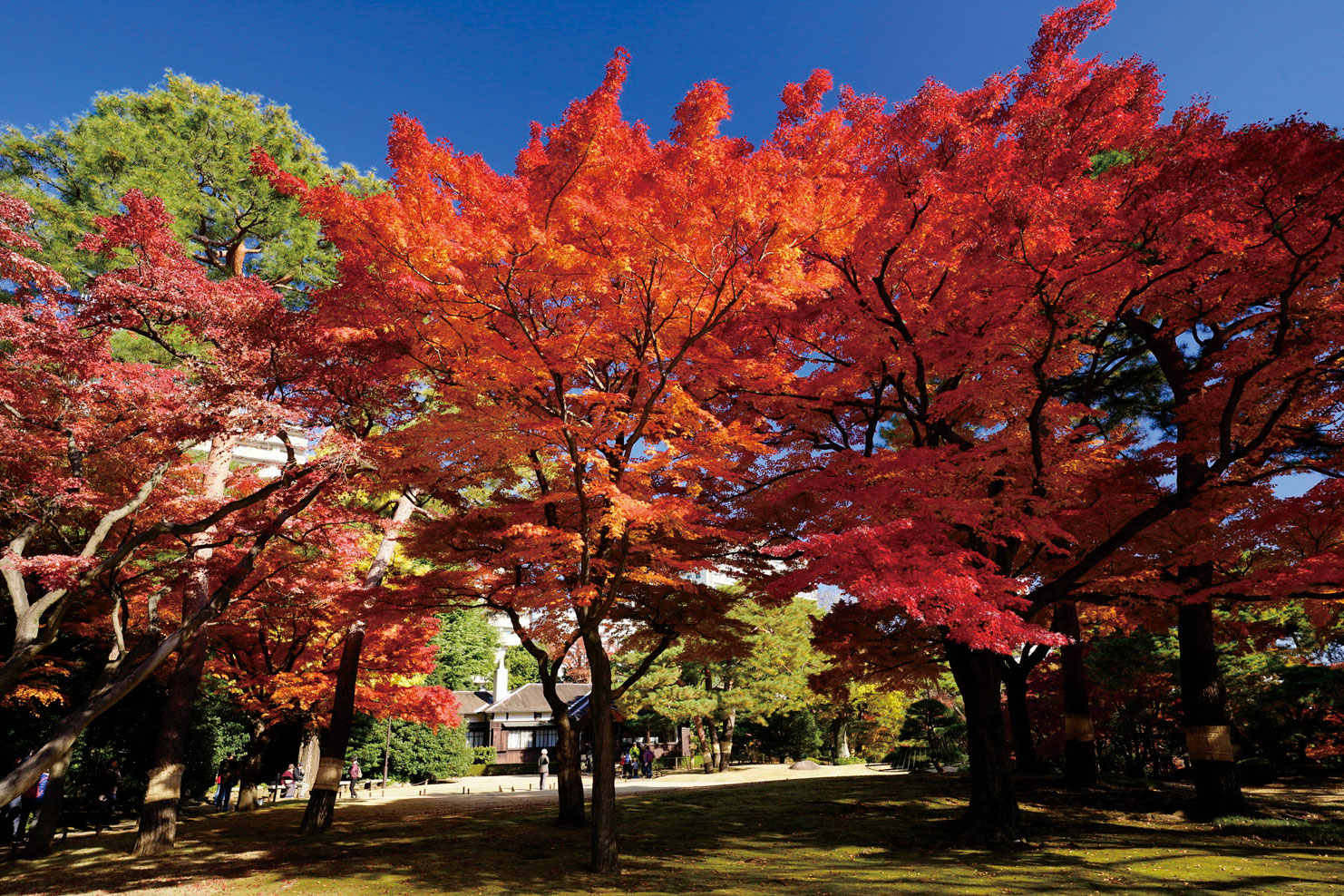 |
How to use PL filters (basics)
Attaching the filter
The frame of a PL filter with its product name written on is called "front frame", while the frame with no indications on is called "rear frame". To attach the PL filter, place the rear frame onto the lens and turn it clockwise.
To remove the PL filter, grab the rear frame and turn counterclockwise.
Let's turn the front frame!
The PL filter can be turned to increase or decrease its effect by turning the front frame. If you do not grip the sides of the filter tightly, but turn the frame with the tip of your fingers, you can avoid accidentally removing the filter.
Let's remember the following "how to use" to get the best effects with PL filters.
How to use n.1 (how to remove reflections)
Removing light reflections from water surface or leaves. The most effective way is to shoot with the filter placed at a 30-40° ankle to the ground level. No polarizing effect is produced if shooting from a frontal position, or against mirrors and metal surfaces.
* The effect cannot be obtained in case of very strong light reflection.
How to use n.2 (how to make blue skies more vivid)
To pronounce the blue sky, the position of the sun is very important. The best position is when the sun is behind the back of the photographer, with the ankle at the photographer being 90° between the sun and the composition.
* The effect is minimized when shooting in cloudy weather conditions or against backlight.
You can have an effect when shooting a subject close to the horizon during the day when the sun is at the zenith, or shooting a subject close to the zenith in the morning and evening when the sun is close to the horizon.
What if I'm not sure if the filter is working?
Before shooting, hold the PL filter in front of your eyes and rotate the front frame, or change the filter's angle while holding it in your hand. If light reflections on your shooting subject change, or the sky above looks darker and brighter, the filter is being effective.
With CIR-PL filters, which come with a front and a rear side, make sure to hold the front frame toward the shooting subject.
* Image for demonstrative purpose only.
Let's make the best use of the PL effect!
PL filters are not meant to be used always with their maximized effect. For example, in waterside settings, such as waterfalls or mountain rivers, it might be better to leave some reflections to convey a more vibrant and lively sensation. Also, in case the blue of the sky gets too much dark, it might be better to reduce the polarizing effect.
You can thus control the amount of reflections according to your taste.
Note 1: Uneven polarization with super wide-angle lenses
 When capturing a blue sky using a PL filter on a super wide-angle lens, some unevenness in form of a spotted sky with some darker and brighter areas may result on the final image. This is called "uneven polarization". To avoid it, change the shooting angle position, or restrain the PL effect accordingly. Also, alternatively to PL filters, other filters like square filters (half ND or half blue filters) are a good way to tone down the color of the sky.
When capturing a blue sky using a PL filter on a super wide-angle lens, some unevenness in form of a spotted sky with some darker and brighter areas may result on the final image. This is called "uneven polarization". To avoid it, change the shooting angle position, or restrain the PL effect accordingly. Also, alternatively to PL filters, other filters like square filters (half ND or half blue filters) are a good way to tone down the color of the sky.
Note 2: frame thickness causing vignetting
 Some filters are labeled as "thin frame" filters. If the filter frame is too thick, a sort of dark shadow appears on the four corners of the final image, especially when using a PL filter on a super wide-angle lens. This is called "vignetting". To prevent "vignetting", "thin frame" filters have been developed by reducing the frame thickness. Particularly with rotating frames, like in PL filters, which are principally a little bit thicker, we recommend choosing a more updated thin frame type.
Some filters are labeled as "thin frame" filters. If the filter frame is too thick, a sort of dark shadow appears on the four corners of the final image, especially when using a PL filter on a super wide-angle lens. This is called "vignetting". To prevent "vignetting", "thin frame" filters have been developed by reducing the frame thickness. Particularly with rotating frames, like in PL filters, which are principally a little bit thicker, we recommend choosing a more updated thin frame type.
How to use PL filters (advanced)
To increase light reflection
 PL filters are not only used to get rid of unwanted light reflections. On the contrary, these filters can also be used to increase visible light reflections.
PL filters are not only used to get rid of unwanted light reflections. On the contrary, these filters can also be used to increase visible light reflections.
When rotating the front frame by 90° from the "max effect" position, light reflections can be captured in a more effective way compared to using no filters, increasing the variety you can express yourself.
* The maximum effect is not always achieved when the ▲ mark is on top.
With PL filters you can either suppress or increase light reflections. If you can't decide which effect is best at the time of shooting, you can take pictures at different angles, with the PL effect at maximum, a little less, or minimum, and then carefully choose the best effect later.
To bring out the colors of a rainbow, iridescent clouds, ice
With PL filters, you can also make the rainbow look clearer by increasing light reflections. It is also effective for rainbow colors such as on iridescent clouds and ice.
However, please note that the rainbow disappears when the reflection is removed.
Stacking with other filters
Multiple filters can be used combined together to take even more impressive shots. For example, if you are photographing a water scene, such as a waterfall or stream, you can use a PL filter in combination with an ND (light reduction) filter to achieve vivid colors and a sense of movement. For more advanced photographers, PL filters can be used in combination with square filters for even more control over the light.
Various expressions of "controlling light reflections"
 A PL filter is a must-have in landscape photography, but it's not an all-purpose filter. Particularly when, after trying a shot with a PL filter on, the result doesn't fit in this certain scenery, it may be necessary to purposely refrain from using the filter. By keeping in mind that PL filters can "control" light reflections, different ways of expression can be achieved.
A PL filter is a must-have in landscape photography, but it's not an all-purpose filter. Particularly when, after trying a shot with a PL filter on, the result doesn't fit in this certain scenery, it may be necessary to purposely refrain from using the filter. By keeping in mind that PL filters can "control" light reflections, different ways of expression can be achieved.
How to choose PL filters
Main points
 HOYA offers several types of PL filters. They all do the same thing in terms of adjusting reflections, but they also have a range of added benefits such as water and oil repellent coatings and anti-reflective coatings to make your photography more comfortable and cleaner. The following are some of the main points to consider when choosing a PL filter.
HOYA offers several types of PL filters. They all do the same thing in terms of adjusting reflections, but they also have a range of added benefits such as water and oil repellent coatings and anti-reflective coatings to make your photography more comfortable and cleaner. The following are some of the main points to consider when choosing a PL filter.
1. Polarizing film
Models: HD nano Mk II CIR-PL | HD Mk II CIR-PL
The polarizing film incorporated at the core of PL filters can be roughly categorized in two types: high-transmission type and normal type. A typical polarizing film darkens the shutter speed by about two stops when the filter is attached. In contrast, the polarizing film of the "high transmission type" is about 1-step down. The advantages of the high-transmission type are that it has little effect on the shutter speed and that it hardly darkens when you look through the viewfinder with SLR cameras. The high-transmission type is the best choice if you want to leave your filter on and never worry about light darkening.
2. Water- and oil-repellent coating
Models: HD nano Mk II CIR-PL | HD Mk II CIR-PL | FUSION ANTISTATIC NEXT CIR-PL | FUSION ONE NEXT CIR-PL
The "water- and oil-repellent coating" strongly repels water and oil from the filter's surface. It allows even dirt or fingerprints to be easily wiped off. It also reduces the stress of shooting in waterside settings or in rainy weather. The completely different easiness of cleaning them with a lens cloth makes filters with a water- and oil-repellent coating a must-have.
Repels even oil-based marking pens and water drops.
* Picture shows a UV filter.
3. Anti-reflection coating
Models: HD nano Mk II CIR-PL | HD Mk II CIR-PL | FUSION ANTISTATIC NEXT CIR-PL, FUSION ONE NEXT CIR-PL
Flare and ghosting can occur when light reflects off the filter glass surface. The anti-reflection coating suppresses unwanted reflections and provides a clearer image. The closer the percentage (%) of surface reflection is to 0, the better the coating quality. Among PL filters currently on the market, with a surface reflection of 0.3% or less, the Celeste is a top-class filter.
4. Black Rimmed Glass
Models: FUSION ANTISTATIC NEXT CIR-PL, FUSION ONE NEXT CIR-PL
 By blackening the outer circumference of the filter glass, internal reflection is prevented to the utmost limit. It also reduces the occurrence of flare and ghosts when shooting with backlight.
By blackening the outer circumference of the filter glass, internal reflection is prevented to the utmost limit. It also reduces the occurrence of flare and ghosts when shooting with backlight.
HOYA CIR-PL filter line-up
PL filters Q&A
How can I check the size of a filter?
By conveniently checking the numbers on the front or back side of your camera lens, or the inside of your lens' cap (e.g.: 58mm, Φ58mm, Φ58). These numbers indicate the filter size for your lens.
How to use filters with lenses that have a different filter diameter?
By using a step-up ring, which is a convenient way to avoid buying multiple PL filters to match all your lenses. With a step-up ring, you can use the same filter on a variety of lenses. Match the filter to the diameter of your largest lens.
Is it ok to leave a protector filter on while using a PL filter?
Be sure to remove any lens protector filter before attaching a PL filter. The increased frame thickness of multiple filters overlapped can cause vignetting (dark shadows at the four corners of the image). Also, increasing the glass surface makes it easier for flare and ghosts to occur.
How to understand if a PL filter is being effective?
Hold the PL filter in front of your eyes and rotate the front frame. If reflective parts on your shooting subject or the sky become darker and brighter as you rotate, the filter is being effective. With CP-L filters, which come with a front frame and a rear frame, hold it so that the front frame faces the subject.
See also "How to use 1 and 2" in this article.
Are PL filters ineffective in cloudy weather or with backlight?
PL filters have almost no effect on cloudy or backlit skies, but it does still reduce surface reflections of subjects such as water, leaves and roads.
What if I can't make the sky blue with a PL filter?
If backlight occurs, the PL filter cannot make the sky blue. In this case, the best solution is a square half ND filter or a half blue filter. The lower half of the filter is transparent, so only the color of the sky will be darkened.
Could I not make a PL effect with post-processing photo editing?
With RAW processing software, it's not that difficult to enhance a blue sky. However, it is extremely difficult to remove reflections. Even if you finalize your shot with some post-processing, it is most efficient with best results to control reflections with a PL filter while shooting.
 Do PL filters have a life span?
Do PL filters have a life span?
PL filters generally turn yellowish after 7 to 8 years*. This is because their polarizing film, which is the main core of these filters, ages with time. Shooting with a discolored filter results in turbid colors. We highly recommend to buy and replace your PL filter if the polarizing film starts deteriorating.
* Standard estimation only. Filters' life span depends on the frequency of use and storage conditions. Filters are particularly sensitive to heat and ultraviolet rays; make sure to store them properly.
* The works credited in the article are winning works of the International Filter Photo Contest.
















